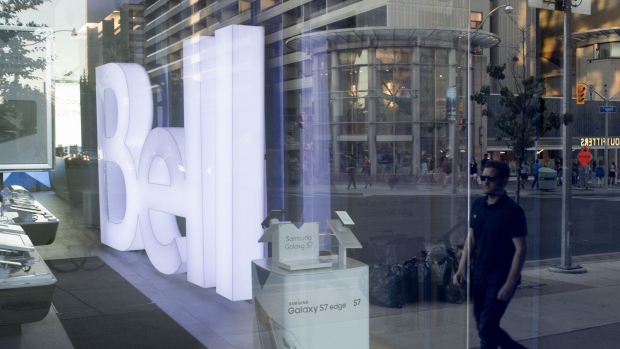Aug 2, 2018
BCE's overall subscriber base grows, led by 18-year high in wireless benchmark
, The Canadian Press

Second-quarter subscriber growth in Bell Canada's three main services beat analyst estimates, led by an 18-year high in new wireless subscribers, but parent company BCE Inc. saw a decline in profit compared with the same time last year.
Bell Canada's 122,092 net new postpaid wireless subscribers -- an industry benchmark -- was the company's best second-quarter result in nearly two decades.
Other major growth areas -- internet and IPTV television -- also had strong additions to their subscriber base for a total of 154,000 added subscribers during a seasonally weak quarter ended June 30, reflecting Bell's investments in fibre-to-the-home technology (FTTH).
The company added about 47,000 customers to its FTTH footprint during the quarter, helping improve the business segment's already strong margin and "giving us the headroom for the capex (spending) program we have for fibre," the telecommunications and media company's chief executive George Cope said on a conference call to discuss the second-quarter results.
Bell's fibre-to-the-home deployment -- which increases the potential speed and throughput of a home's internet and IPTV service -- means it expects to be able to provide its most advanced wireline service to 88 per cent of homes in Toronto's core 416 area code by the end of 2018.
The fibre deployment will continue next year within Bell's other residential markets, including Montreal.
The FTTH has enabled Bell to offer home internet speeds of up to one gigabit per second -- about what chief residential rival Rogers Communications Inc. has been offering throughout its cable networks in Ontario, New Brunswick and Newfoundland.
Cope said Bell will soon be able to offer a 1.5 gigabit per second home internet service starting this month in Ontario, followed by Quebec, Atlantic Canada and Manitoba.
"A positive of this is that any client who has purchased our fibre product over the last couple of years will not require a change in the modem, they'll be able to just go through an upgrade in speed," Cope added.
He also noted that strong growth in Bell's postpaid wireless customer base included the addition of subscribers under a previously announced six-year contract with the federal government, which switched from Rogers.
Although Bell didn't disclose how many federal wireless customers were included in the second-quarter results, the company has said it will provide services to about 230,000 wireless customers in more than 100 departments and agencies, over time. Cope said that there are still some of those subscribers to add to its network.
A downside for the federal contract is that it dragged down Bell's overall average revenue growth per user to 0.6 per cent (from 1.7 per cent without those subscribers) but a positive is that the subscribers will be locked in for at least six years, reducing the rate of customer turnover, or churn -- a measure that all wireless companies are working to reduce.
Bell's overall wireless business has also been beefed up by the creation of the Lucky Mobile flanker brand -- primarily a prepaid service -- to serve a market niche that the company hadn't addressed vigorously, Cope said.
"The Lucky Mobile product is doing what we expected it to do strategically. In late July, we rolled Lucky Mobile out to the remaining provinces in the country so we're now in all 10 provinces."
Lucky Mobile is Bell's third mobile brand after Bell Mobility and Virgin Mobile. Together, they compete with three brands from Rogers (Rogers, Fido and Chatr), three from Telus (Telus, Koodo and Public Mobile) and one each from Quebecor (Videotron) and Shaw Communications Inc. (Freedom).
In terms of profit, BCE's net income attributable to common shareholders was $705 million or 79 cents per share.
That was down from $765 million or 85 cents per share in last year's second quarter and below analyst estimates of 88 cents per share, according to Thomson Reuters Eikon.
Adjusted net earnings were down 2.3 per cent at $777 million or 86 cents per share, which was below the estimate of 86 cents per share.
Chief financial officer Glen LeBlanc said the earnings per share were down because of operating losses at some of BCE's minority equity investments. He said that margin growth in the wireless business improved despite a four per cent increase in operating costs.
Revenue edged up 1.7 per cent to $5.8 billion, in line with analyst estimates.
BNN Bloomberg is a division of Bell Media, which is owned by BCE.




